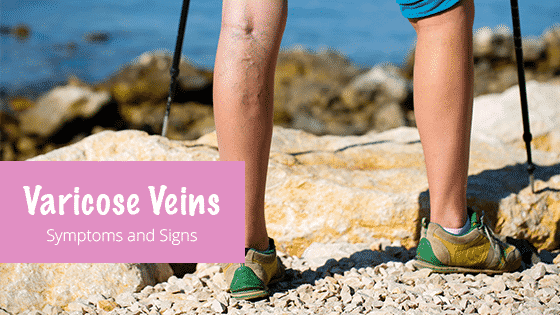
Have you ever noticed thick, larger than normal veins in your legs? These are varicose veins and they are caused by blood pooling in your veins because your valves aren’t closing all the way. Varicose veins can happen in any vein, but we see them the most in the legs because walking and standing are the most common stressors on your veins. You might dislike the way your varicose veins look, or they may be causing a significant amount of pain. Either way, understanding more about your varicose veins could help you avoid serious health problems down the road.
Varicose Vein Symptoms and Signs
There are several varicose vein symptoms you may notice, such as:
• Burning and itching in your legs
• Discolored skin around your ankles or legs
• Any or all of the following in your legs: heaviness, tiredness, restlessness
• Cramping in your legs or feet
• Developing open sores or ulcers on your lower legs
• Feet or leg swelling, especially at night
What’s Causing My Varicose Veins
Varicose veins are caused by a number of factors that can range anywhere from genetics to lifestyle habits. Some of the more common causes of varicose veins include:
• Age: Men and women both have a higher chance of developing varicose veins over age 50. The breakdown is fairly even, with 45% of men developing venous disease and 55% of women.
• Activity level: As we age, we slow down. Sitting for large periods of time can increase the risk of varicose veins.
• Job requirements: Jobs that require you to constantly be on your feet or constantly sitting can cause a lot of stress on your veins that result in varicose veins.
• Weight gain
• Pregnancy: Around 75% of women develop varicose veins during pregnancy but symptoms can improve after the baby is born.
Treating Varicose Veins
There are a variety of treatment options available for varicose veins. Sclerotherapy is the most common treatment for varicose veins and spider veins under a certain size. Your doctor will inject medication into your veins, causing them to collapse and be reabsorbed into the body, minimizing their visibility on your skin’s surface.
You may also opt for Laser Vein Therapy – Nd:YAG™ which uses a small beam of laser light to minimize the appearance of varicose veins. No scalpels or needles are needed; the laser is simply absorbed into the bloodstream and veins fade over time.
Summit Skin & Vein Care also provides Endovenous Laser Ablation (EVLA) Treatment for varicose veins. This option is also nonsurgical and uses a laser fiber inserted into the vein via needle. This fiber uses laser light pulses to seal the collapsed vein shut. This option is 95% to 98% effective at closing varicose veins.
Preventing Varicose Veins at Home
You can also help prevent varicose veins by making lifestyle choices in your everyday life. There’s no foolproof, 100% effective way to get rid of varicose veins because they can be hereditary or due to age, but you can improve circulation and muscle with regular exercise to lower your risk of developing varicose veins. Certain dietary changes, such as cutting out sodium and consuming more fiber, can also help lower your risk. Finally, avoid wearing high heels and make sure you give your veins a rest with standing or sitting breaks.
Don’t struggle with varicose veins alone. Summit Skin & Vein Care is here to help. Contact us today to set up a FREE color duplex ultrasound scan! Our specialists will be happy to discuss your varicose vein treatment options with you.